| STRONGBOARD BALANCE | BOSU |
|---|---|
| StrongBoard Balance is designed to safely control your mount and dismount, left to right, or right to left. | When stepping on the flat side of Bosu (which it’s manufacturer warns against) it is impossible to control the direction the bosu ball will move. |
| StrongBoard Balance has a lip which prevents your feet from sliding off the platform. | Bosu Ball does not have a protective lip. |
| StrongBoard Balance offers a flat surface which protects your joints. | The dome side of Bosu is curved and can cause excessive supination to your ankles or wrists. |
| StrongBoard Balance supports your kinetic chain in all 6 positions. | Because your feet and hands must curve around the air in a Bosu Ball, they can over-supinate which does not support your kinetic chain. |
| StrongBoard Balance allows for a full range of motion, providing UNLIMITED DYNAMIC ARTICULATION™. | The ROM offered on Bosu will always be dependent on the amount of air in the ball, and compete directly with its PSI. |
| StrongBoard Balance will never deflate or burst. | Bosu balance ball often deflates and has the potential to burst. |
| StrongBoard Balance will never have to be refilled with air or have it’s PSI calibrated. | Bosu requires regular maintenance. |
| StrongBoard Balance offers a 3 year manufacturer’s warranty. | Bosu offers a 6 week limited warranty. |
| StrongBoard is virtually indestructible, comprised of military grade polylac and automotive springs. | Bosu ball is comprised of air. |
| StrongBoard’s patented MULTI SPRING TECHNOLOGY™ (MST) and the restuling UNLIMITED DYNAMIC ARTICULATION™ (UDA) is proven scientifically, and defined by Hooke’s Law and Newton’s Laws of Motion | Bosu balance ball does not offer MULTI SPRING TECHNOLOGY™, does not offer UNLIMITED DYNAMIC ARTICULATION™ and doesn’t promote the scientific evidence of specific utility effectiveness. |
| StrongBoard Balance does not allow users to stabilize, requiring total core engagement. | Users can find a point of stabilization on Bosu and as the body naturally seeks this it’s common to find your core is not actually engaged. |
| Learning to balance and stabilize on StrongBoard’s flat platform powered by MULTI SPRING TECHNOLOGY has applications across many surfaces and is proven to improve reaction time in real life situations.. | Learning to balance on an air filled dome doesn’t translate very well into balancing on other surfaces. |
StrongBoard Balance® vs. Bosu®: The Differences
Getting On and Off: StrongBoard Balance vs. Bosu
STRONGBOARD BALANCE® – The platform’s level surface makes getting on and off safe and easy. Each unit comes with an “on /off” instructional card, and there is an introduction video accessible on the education tab.
BOSU® – When using BOSU® upside down (although the manufacturer warns against this), the round belly and pliable air make it very difficult to control which direction and degree the platform will tilt, creating risk to the user. When using BOSU® right side up, user’s feet (or hands) sink into the bubble and can over-supinate around the round dome shape, creating strain on ankle, wrist, knee, elbow, shoulder and hip joints.
Stabilization: StrongBoard Balance vs. Bosu
STRONGBOARD BALANCE® – One can think of the SBB as a multidirectional teeter totter, creating movement in all three planes of direction (i.e., sagittal, frontal and transverse). The springs act as the fulcrum – where load and effort are continually combating one another in attempts to find equilibrium (balance). This instability creates a number of involuntary muscle contractions not only in the primary movers, but also in the smaller stabilizing muscles.
Increased joint angle provides an increase in instability. Whereas standing erect or arms fully locked provides the more stabilization due to less force being required by the muscles and joints to stabilize.
BOSU® – It is possible to stabilize on BOSU® as it employs air which is pliable, transferable and can be manipulated by applied weight. When a user finds stabilization, involuntary muscle contraction is significantly decreased.
Range of Motion: StrongBoard Balance vs. Bosu
STRONGBOARD BALANCE® – StrongBoard’s 4″ (MINI) and 6″ (STRONGBOARD BALANCE) springs allow for a maximum range of motion in all three planes of motion (i.e., sagittal, frontal and transverse) during full body exercises.
Bosu® – Bosu® offers a limited range of motion depending on the amount of air inside the inflatable ball (less air – means it’s more pliable and increases the surface contact of the feet and hands), the weight of the user, and the competing degree of supination.
Exercises: StrongBoard Balance vs. Bosu
STRONGBOARD BALANCE® – SBB offers a flat/level, industrial grade platform for standing exercises, which mimics most real life movements and surfaces.
Bosu® – For standing exercises, Bosu® has a round, soft dome, which causes a user’s ankles to naturally supinate and the knees and hips to externally rotate, which can create strain in the ligaments and joints. The flat site of BOSU®, does allow for joint protection from over supination in a standing position.
Note*- the warning “do not stand on this side,” is imprinted by the manufacturer’s BOSU®.
Instability Variance: StrongBoard Balance vs. Bosu
STRONGBOARD BALANCE® – Because the springs serve as a fulcrum, greater instability may occur the further away the feet or hands are placed from the center of the board (think of a teeter totter). While placing the feet/hands in a neutral position. This instability allows for a greater activation of the supporting/stabilizing musculature. Creating involuntary muscle contractions and increased core engagement.
Wider stance/hand position & increased joint angle: Increased instability
Closer stance/hand position & decreased joint angle: Increased stability
Bosu®: Instability varies depending on several factors – user’s weight and the amount of air within. When properly inflated – and the feet are placed closer to the center of the dome there is considerably more stability due to the top of the dome having less angle. However, if overinflated and the feet are placed further away from the center of the dome, the ankles tend to over supinate, causing the knees and hips to externally rotate.
Bosu® – BOSU® is approved for 350 pounds. However, it can be easily overinflated or underinflated as well as punctured or torn with no guarantee or replacement from the manufacturer.
Customization: StrongBoard Balance vs. Bosu
STRONGBOARD BALANCE® – SBB allows its users to customize their boards to match their unique personality, facility, company, school, or team. Customization is available in the following basic colors – white, black, red, blue, orange, green, yellow as well as premium colors – Pink, Purple, Green, Turquoise (additional cost).
Bosu® – Bosu® is available in very limited colors (blue, pink and black) and does not offer customization.
Weight Limit / Durability: StrongBoard Balance vs. Bosu
STRONGBOARD BALANCE®- StrongBoard Balance is approved for 500 pounds with no compromise in integrity.
Bosu® – BOSU® is approved for 350 pounds. However, it can be easily overinflated or underinflated as well as punctured or torn with no guarantee or replacement from the manufacturer.
Warranty: StrongBoard Balance vs. Bosu
STRONGBOARD BALANCE® – StrongBoard Balance offers a 3-year manufacturer’s warranty and is proudly manufactured and distributed in the USA.
Bosu® – Bosu® offers a 1 year limited warranty.

